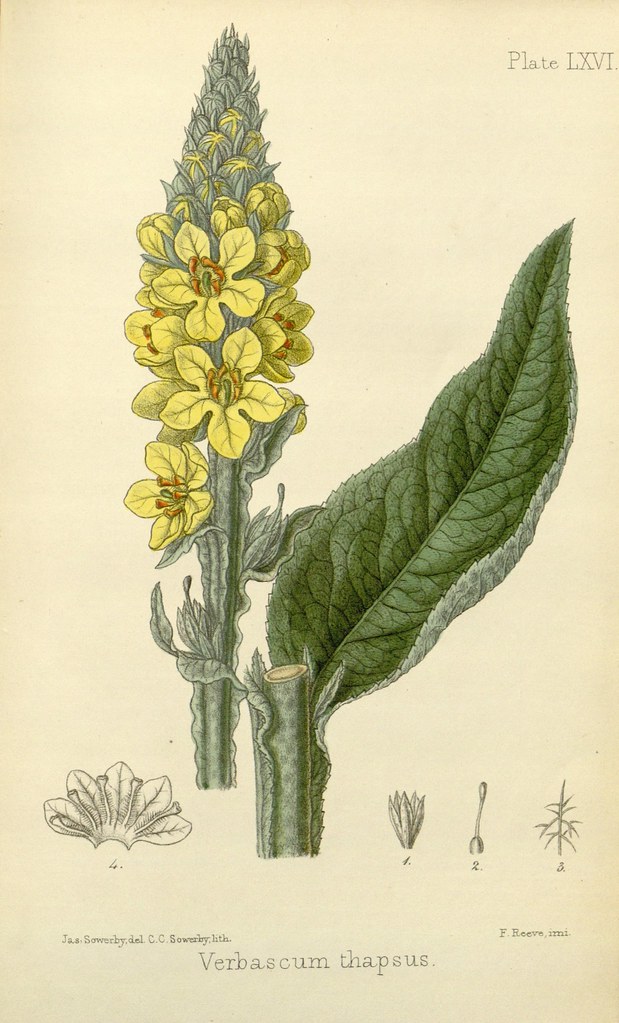#Homeopathy
Text

intergalactic meow meows 🐾 🪐 💫
I’ll have them available as stickers in the next shop update, but I’m also thinking of turning them into mini charms at some point 👀👀
#honkai star rail#HSR#my art#trailblazer#dan heng#march 7th#welt yang#gepard#jin yuan#arlan#Sampo#blade honkai#yanqing#homeopathy#Kafka#kafka honkai star rail#seele#bronya
481 notes
·
View notes
Note
Homeopathy cured my cancer
It's infinitely more likely that you experienced spontaneous remission than healing through sugar pills that contain little to no actual medicinal compounds.
Actual research on homeopathy continues to find that it simply does not work.
31 notes
·
View notes
Photo
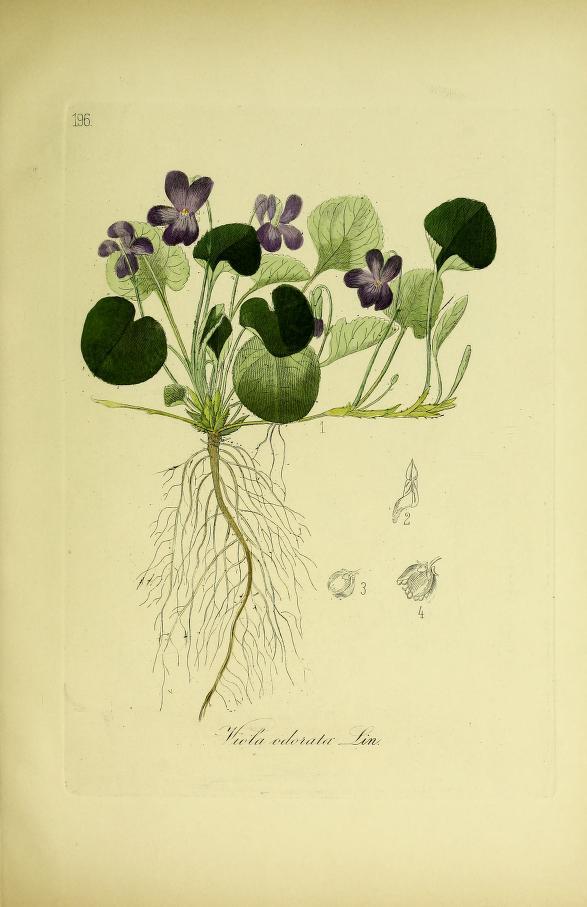

More April violets taken from ‘Die Pflanzen des Homöopathischen Arzneischatzes’ by A. von. Villers, Felix von Thümen.
Published 1893 by W. Baensch.
Wellcome Library.
archive.org
142 notes
·
View notes
Text


No early walk, no workout.
I didn't know I'd be having a day off until my usual "get up and move" time came around, and my whole system said "nope, not today sue...not today".
Rough night, which is nothing unusual, and I just decided to stay in bed late for a change. That is VERY unusual!
I'd already decided on a shorter fast last night.
Day three back on the peanuts. Just half the amount I was having before. Mixed with plain, mixed nuts and half an apple.
Seems fine. No noticeable backlash. Yet. Really looking forward to the homeopathy appointment on Saturday. Fingers crossed!
9 notes
·
View notes
Text
Ooohhhhh my god I can't believe

Homeopathy? For real? You're telling me to take a pill/cream from the people who believe that water has a memory?
Just in case anyone needs a refresher on this bullshit:
Homeopathy is based on the law of similars (‘like cures like’) which states that a substance that causes specific symptoms in a healthy person can be used to treat those symptoms in a sick person. Remedies undergo a process called ‘potentization’ which describes stepwise dilution from the ‘mother tincture’ combined with ‘succession’ (vigorous shaking). The underlying assumption is that the more dilute a remedy the greater its potency, even though according to Avogadro's number, with potencies beyond 12C (12 centesimal dilutions) the chance of a single molecule remaining in the final solution tends to the infinitesimal.
TL;DR: If you were bitten by a snake, homeopathy would try to cure you by giving you the venom from the snake. But don't worry! They also believe that diluting the active ingredient makes it more potent!
"As world-renowned scientific skeptic James Randi put it: 'this would be tantamount to grinding a grain of rice into tiny particles, dissolving it in a sphere of water the size of our Solar System, and then repeating this process about 2 billion times.' One of the ways by which followers of homeopathy deal with such criticism is their claim that water retains a memory of the substance: even after it is gone its properties are embedded in the water molecules."
#I guess I trust these people to clean my pores#but I'll be checking to see how they sterilize their tools#because I don't want an infection#pseudoscience and mystic bullshit#homeopathy
19 notes
·
View notes
Text
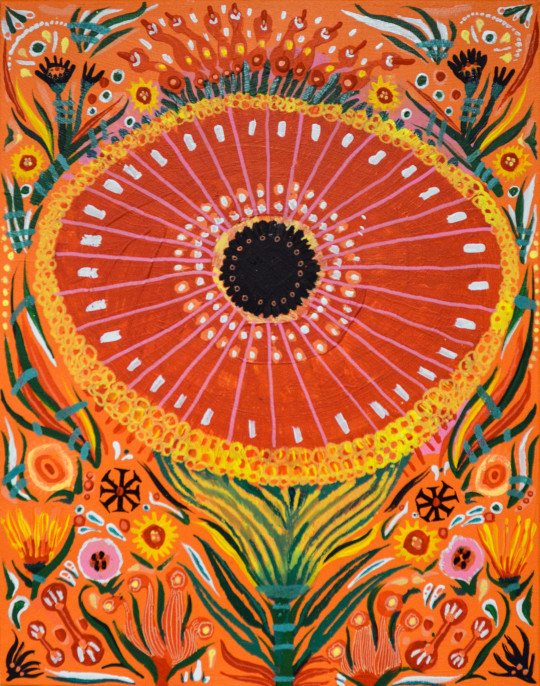




Orange.
18x24"
Acrylic on canvas
#drawing#draw#art#fine art#painting#milwaukee#fleming#symbol#symbolism#figure#acrylic#figurative#october#halloween#orange#natural remedy#flower#botanical#homeopathy#holistichealth#natural healing#apothecary
20 notes
·
View notes
Text
I have seen WAY too many posts about “herbal remedies to provide abortion” going around with the recent news
And as a historian focusing on medical history I’m thrilled to see people looking to the past to see what people with uteruses used to bring on menstruation (induce abortion) because the history of reproductive healthcare and of abortion in particular is extremely important in understanding our current circumstances and the circumstances Americans were in before Roe
But I also really really need y’all to listen to me both as a historian and as someone who’s been making and using herbal remedies my whole life:
A lot of these “remedies” will kill you.
This isn’t an exaggeration, this isn’t a scare tactic designed to make you lose hope on reproductive healthcare. A lot of herbal remedies can and will kill you- especially if you don’t speak to actual herbalists, licensed homeopaths, and actual physicians who know your medical history before using an herbal remedy. Even helpful herbs can be very very dangerous in doses large enough to induce an abortion - I’m taking completely shutting down your liver and killing your kidneys dangerous.
I also want it pointed out that a LOT of online homeopathic groups are full of misinformation- the kind that leads people to accidentally dose themselves with arsenic by consuming fruit pits as well as incredibly ableist anti-modern science and anti-vax arguments. A lot of people in online homeopathic spaces are ableist white supremacists who hide behind a veneer of “new age spirituality” rather than conservative evangelical Christianity.
You have to be extremely careful about where you’re getting your information from and how you’re using that information.
I’m currently working on putting together a master list of licensed homeopaths who have resources available in the wake of the leaked Supreme Court decision and will share that when it’s finished. Just please folks- stay safe.
675 notes
·
View notes
Text

#herbal medicine#herbalism#natural living#homeopathy#stay at home wife#traditional home#stay at home mom#homesteading#homemaking#homemaker#traditional housewife#50s housewife#vintage housewife#housewife#crunchy mom#hippie mom#traditional femininity#holistic#holisticwellness#holistichealth#tradfem#traditional gender roles#traditional wife#traditional marriage#traditionalism#tradblr#tradwife#hyper feminine#femininity#from scratch
11 notes
·
View notes
Text
What can we learn from a day in the life of an ancient Egyptian doctor? From innovative treatments and techniques to the spiritual calling of healing, uncover the secrets of Ancient Egypt’s medical practices.
#ancient Egypt#ancient medicine#doctor#ancient cures#Egyptian doctor#homeopathy#ancient#history#ancient origins
42 notes
·
View notes
Text
youtube
James Randi's Challenge to Homeopathy Manufacturers and Retail Pharmacies
April 10-16 is Homeopathy Awareness Week.
Be aware that homeopathy is fake medicine and homeopaths are con artists.
[ Note: the 1023.org.uk website is now defunct. ]
https://web.randi.org/h---encyclopedia-of-claims.html
Homeopathy
This claimed healing modus is included here because it is an excellent example of an attempt to make sympathetic magic work. Its founder, Christian Friedrich Samuel Hahnemann (1775?-1843), believed that all illnesses develop from only three sources: syphilis, venereal warts, and what he called “the itch.”
The motto of homeopathy is “Similia similibus curantur” (“Like cures like”). It claims that doses of substances that produce certain symptoms will relieve those symptoms; however, the “doses” are extremely attenuated solutions or mixtures, so attenuated that not a single molecule of the original substance remains. In fact, the homeopathic corrective is actually pure water, nothing more. The theory is that the vibrations or “effect” of the diluted-out substance are still present and work on the patient. Currently, researchers in homeopathy are examining a new notion that water can be magnetized and can transmit its medicinal powers by means of a copper wire. Really.
The royal family of England adopted homeopathy at its very beginning and have retained a homeopathic physician on staff ever since.
The only concern of homeopaths is to treat the symptoms of disease, rather than the basic causes, which they do not recognize. Thus homeopathy correctly falls into the category of magic. And quackery.
#World Homeopathy Awareness Week#James Randi#homeopathy#homeopath#fake medicine#medicine#alternative medicine#Homeopathy Awareness Week#magical thinking#religion is a mental illness#Youtube
38 notes
·
View notes
Text
That post about homeopathy makes me so mad about my hyoscyamine. Not that hyoscyamine is in defense of homeopathy, but because it isn't a homeopathic medicine even tho it is literally a diluted form of deadly nightshade. But this isn't some hippie dippie totally-effective-because-it's-a-naturally-occurring-plant-BUT-it's-been-dilluted-and-i-dunno-mixed-with-purifying-essential-oils-and-that-totally-makes-the-deadly-toxin-a-cure-for-everything vitamin, it's an actual prescription! From an orange prescription pill bottle with my name and doctor on it! It's used to treat stomach cramps from IBD and IBS! It was prescribed by my gastroenterologist, M.D.! She told me to take it three times a day for my Crohn's pain! It's diluted deadly nightshade in pill form and it actually works! I'm so mad about that!
25 notes
·
View notes
Text
Hippies of tumblr, please help!
When I was young there was a big grove of Russian Olive trees out back behind my school. This tree is also called Elaeagnus angustifolia, Oleaster, silverberry, or wild olive I THINK.
Every May they would bloom with these tiny little unobtrusive looking flowers that smelled AMAZING. Heady and woody but not too sweet.
I have always wanted to make that scent into perfume. Candles. Soap. anything. I want to roll myself and everything I love into it.
But although I can find a lot of natural medicine articles about how healthy the essential oil from this plant is I can't find it. The one and only place I've seen it sold in 20 years of looking is this one Arabic-speaking etsy seller in England. Were it not for the goddamn $50 of shipping I would have joyfully bought a ton.
Does ANYONE know where I can get this scent? An absolute would be ideal but I'll take an essential oil if that's all I can get.
I have researched it but I'm just not prepared to do the extraction myself to the level of fidelity and strength I'm hoping for.
I'm getting into perfume making, and this is the one scent I haven't been able to source.
Please let me know if you have a lead. Boosts welcome.
10 notes
·
View notes
Text
I’m very sick without health insurance in the United States… if any of you know home remedies for pneumonia please help.
#working class solidarity#class warfare#sick#home remedies#herbal#wellness#home medical equipment#herbalism#herbalist#homeopathy#doctors#medication#medical field#diy punk#crust punk#disabled#class disparity#send help#please help#self help#poverty#important#lgbtq#lgbtqia#young artist#artists on tumblr#art#I’m trying to reach out in any way I can#i’m just a girl
3 notes
·
View notes
Text
*Dr. Smita Goel Homeopathy Clinic*
www.thehomeopathyclinic.co.in
A person with short stature, or restricted growth, does not grow as tall as other people of the same gender, age, and ethnicity. The person's height is below the 3rd percentile.
Short stature can be a variant of normal growth, or it may indicate a disorder or condition.
Growth rate is an important indicator of overall health. Children who do not reach the 5th percentile by the age of 5 years are said to be small for gestational age (SGA). A pediatrician will look out for signs of "failure to thrive."
Early intervention can prevent future problems in many cases.
Normally, at 8 years of age, a child's arm span is around the same as their height. If these measurements are out of proportion, this may be a sign of disproportionate short stature (DSS), sometimes known as "dwarfism."
Fast facts on short stature
Here are some key points about short stature. More detail is in the main article.
• Short stature can happen for a wide range of reasons, including having small parents, malnutrition, and genetic conditions such as achondroplasia.
• Proportionate short stature (PSS) is when the person is small, but all the parts are in the usual proportions. In disproportionate short stature (DSS), the limbs may be small compared with the trunk.
• If short stature results from a growth hormone (GH) deficiency, GH treatment can often boost growth.
• Some people may experience long-term medical complications, but intelligence is not usually affected.
Causes
Growth depends on a complex range of factors, including genetic makeup, nutrition, and hormonal influences.
The most common cause of short stature is having parents whose height is below average, but around 5 percent of children with short stature have a medical condition.
Conditions that can underlie short stature include:
• Undernutrition, due to a disease or lack of nutrients
• Hypothyroidism, leading to a lack of growth hormone
• A tumor in the pituitary gland
• Diseases of the lungs, heart, kidneys, liver, or gastrointestinal tract
• Conditions that affect the production of collagen and other proteins
• Some chronic diseases, such as celiac disease and other inflammatory disorders
• Mitochondrial disease, which can affect the body in different ways, including growth
Sometimes, an injury to the head during childhood can lead to reduced growth.
A lack of growth hormone can also lead to delayed or absent sexual development.
Rheumatologic diseases, such as arthritis, are linked to short stature. This may happen because of the disease, or as a result of the glucocorticoid treatment, which can affect the release of growth hormone.
Disproportionate short stature (DSS) usually stems from a genetic mutation that affects the development of bone and cartilage and undermines physical growth.
The parents may not have short stature, but they may pass on a condition that is linked to DSS, such as achondroplasia, mucopolysaccharide disease, and spondyloepiphyseal dysplasia (SED).
Types
There are different types and causes of short stature, or restricted growth, and they will present differently. Because the range of conditions is so broad, restricted growth can be classified in various ways.
One categorization is:
• Variant restricted growth
• Proportionate short stature (PSS)
• Disproportionate short stature (DSS)
Each of these categories includes a number of types and causes of short stature.
Variant restricted growth
Sometimes a person is small but otherwise healthy. This can be referred to as variant restricted growth. It may happen for genetic or hormonal reasons.
If the parents are also small, this can be called familial short stature (FSS). If it stems from a hormonal issue, it is a constitutional delay in growth and adolescence (CDGA).
The limbs and the head develop in proportion with the spine, and the individual is otherwise healthy.
Growth happens throughout the body, so the legs, for example, are in proportion with the spine.
In most cases, the individual's parents are also small, but sometimes small stature happens because the body does not produce enough growth hormone (GH), or the body does not process growth hormone properly. This is known as GH insensitivity. Hypothyrodism can lead to low hormone production.
Growth hormone treatment during childhood may help.
Proportionate short stature (PSS)
Sometimes, overall growth is restricted, but the person's body is in proportion, and the individual has a related health problem. This is known as proportionate short stature (PSS).
If the individual is heavy for their height, this can suggest a hormone problem. The problem could be hypothyroidism, excess glucorticoid production, or too little GH.
A person who is small and their weight is low for their height may be experiencing malnutrition, or they may have a disorder that leads to malabsorption.
Whatever the underlying reason, if it affects overall growth, it may impact development in at least one body system, so treatment is needed.
During adulthood, a person with this type of restricted growth is more likely to experience:
• osteoporosis
• cardiovascular problems
• reduced muscle strength
Rarely, there may be cognitive problems, or problems with thinking. This depends on the cause of the short stature.
Disproportionate short stature (DSS)
Disproportionate short stature (DSS) is linked to a genetic mutation. The parents are usually of average height. As with other types of short stature, a range underlying causes is possible.
An individual with DSS will be small in height, and they will have other unusual physical features. These may be visible at birth, or they may develop in time as the infant develops.
Most individuals will have an average-sized trunk and short limbs, but some people may have a very short trunk and shortened, but disproportionately large limbs. Head size may be disproportionately large.
Intelligence or cognitive abilities are unlikely to be affected unless the person has hydrocephalus, or too much fluid around the brain.
Achondroplasia underlies around 70 percent of cases of DSS. It affects around 1 in 15,000 to 1 in 40,000 people.
Features include:
• an average-sized trunk
• short limbs, especially the upper arms and legs
• short fingers, possibly with a wide space between the middle and ring fingers
• limited mobility in the elbows
• a large head with a prominent forehead and flattened bridge of the nose
• bowed legs
• lordosis, a progressive development of a swayed lower back
• average adult height of 4 feet, or 122 cm
Hypochondroplasia is a mild form of achondroplasia. It may be difficult to differentiate between familial short stature and achondroplasia.
Achondroplasia and hypochondroplasia result from a genetic mutation.
Genetic conditions, such as Turner syndrome, Down syndrome, or Prader Willi syndrome, are also linked to DSS.
Diagnosis
Some types of short stature can be diagnosed at birth. In other cases, routine visits to a pediatrician should reveal any abnormal growth pattern.
The doctor will record the child's head circumference, height, and weight.
If the doctor suspects restricted growth, they will carry out a physical examination, look at the child's medical and family history, and possibly carry out some tests.
These may include:
An x-ray, to assess for problems with bone development
An insulin tolerance test, to check for a deficiency in the growth hormone insulin-like growth factor-1 (IGF-1).
In this test, insulin is injected into a vein, causing blood glucose levels to drop. Normally, this would trigger the pituitary gland to release growth hormone (GH). If GH levels are lower than normal, there may be a GH deficiency.
Other tests include:
• a thyroid-stimulating hormone test, to check for hypothyroidism
• a complete blood count, to test for anemia
• metabolic tests, to assess liver and kidney function
• erythrocyte sedimentation and C-reactive protein tests, to assess for inflammatory bowel disease
• urine tests can check for enzyme deficiency disorders
• tissue transglutinase and immunoglobulin A tests, for celiac disease
• imaging scans, such as an x-ray of the skeleton and the skull or an MRI, can detect problems with the pituitary gland or hypothalamus
• bone marrow or skin biopsies may help confirm conditions associated with short stature
Treatment
Treatment will depend on the cause of the short stature.
If there are signs of malnutrition, the child may need nutritional supplements or treatment for a bowel disorder or other condition that is preventing them from absorbing nutrients.
If growth is restricted or delayed because of a hormonal problem, GH treatment may be necessary.
Pediatric hormone treatment: In children who produce too little GH, a daily injection of hormone treatment may stimulate physical growth later in life. Medications, such as somatropin, may eventually add 4 inches, or 10 centimeters, to adult height.
Adult hormone treatment
: Treatment for adults can help protect against complications, for example, cardiovascular disease and low bone mineral density.
Somatropin, also known as recombinant GH, might be recommended for people who:
• have a severe growth hormone deficiency
• experience impaired quality of life
• are already receiving treatment for another pituitary hormone deficiency
Adult patients generally self-administer daily with an injection.
Adverse effects of somatropin include headache, muscle pain, edema, or fluid retention, problems with eyesight, joint pain, vomiting, and nausea.
The patient may receive treatment to control chronic conditions, such as heart disease, lung disease, and arthritis.
Treatment for DSS
As DSS often stems from a genetic disorder, treatment focuses mainly on the complications.
Some patients with very short legs may undergo leg lengthening. The leg bone is broken and then fixed into a special frame. The frame is adjusted daily to lengthen the bone.
This does not always work, it takes a long time, and there is a risk of complications, including:
• pain
• the bone forming badly or at an inappropriate rate
• infection
• deep vein thrombosis (DVT), a blood clot in a vein
Other possible surgical treatments include:
• use of growth plates, where metal staples are inserted into the ends of long bones where growth takes place, to help bones grow in the right direction
• inserting staples or rods to help the spine form the right shape
• increasing the size of the opening in the bones of the spine to reduce pressure on the spinal cord
Regular monitoring can reduce the risk of complications.
Complications
A person with DSS may experience a number of complications.
These include:
• arthritis later in life
• delayed mobility development
• dental problems
• bowed legs
• hearing problems and otitis media
• hydrocephalus, or too much fluid in the brain cavities
• hunching of the back
• limb problems
• swaying of the back
• narrowing of the channel in the lower spine during adulthood and other spine problem
• sleep apnea
• weight gain
• speech and language problems
Individuals with proportionate short stature (PSS) may have poorly developed organs and pregnancy complications, such as respiratory problems. Delivery will normally be by cesarean section.
Outlook
Most people with short stature will have a normal life expectancy, and 90 percent of children who are small for their age at 2 years will "catch up" by adulthood.
The 10 percent who do not catch up are likely to have a condition such as fetal alcohol, Prader-Willi, or Down syndrome.
A person with achondroplasia can also expect a normal lifespan.
However, some serious conditions that are linked to some cases of short stature can be fatal.

#greater noida#best homeo clinic in indirapuram#homeopathy for ibs#ghaziabad#homeopathy clinics#homeopathy cold treatment in indirapuram#homeopathy doctor#best skin doctor in ghaziabad#homeopathy#homeopathy medicine#best homeopathy clinic in indirapuram#best homeopathy doctor#homeopathy skin allergies treatment in indirapuram#homeopathy skin allergies treatment in noida#homeopathy specialist in indirapuram#homeopathy treatment#laser treatment in indirapuram#skin specialist in indirapuram#indirapuram#ghaziabad latest news#ghaziabadnews#best schools in ghaziabad#ayurvedic doctor in ghaziabad#wave city ghaziabad#greater noida west#child doctor in noida#child specialist in noida#noida news#nursery school in greater noida#noida
2 notes
·
View notes
Text


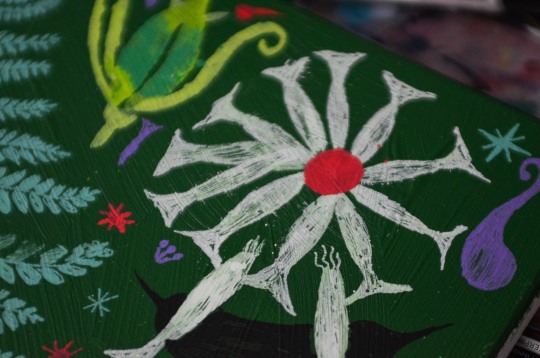

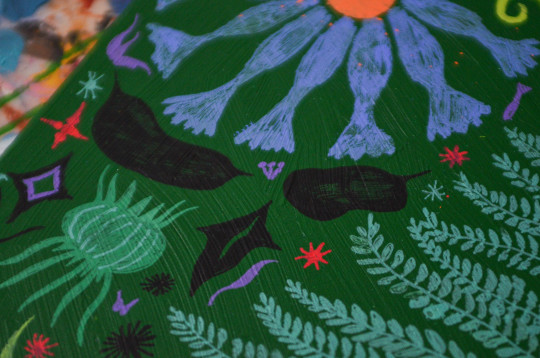
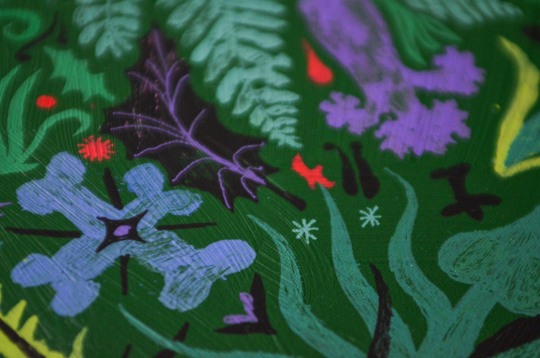
Green.
18x24"
Acrylic on canvas.
#art#milwaukee#fine art#painting#fleming#symbol#symbolism#acrylic#foliage#color#saturation#green#envy#greed#growth#health#apothecary#natural remedy#homeopathy#botanical#nature#fern
27 notes
·
View notes
Video
n250_w1150 by Biodiversity Heritage Library
Via Flickr:
The flora homoeopathica :. London :Leath & Ross,1852-1853.. biodiversitylibrary.org/page/6026992
#Botany#Medical#Homeopathy#Materia medica and therapeutics#Materia medica#Vegetable#Pictorial works#Missouri Botanical Garden#Peter H. Raven Library#bhl:page=6026992#dc:identifier=http://biodiversitylibrary.org/page/6026992#flickr#verbascum thapsus#Great mullein#mullein#greater mullein#common mullein#botanical illustration#scientific illustration
14 notes
·
View notes
